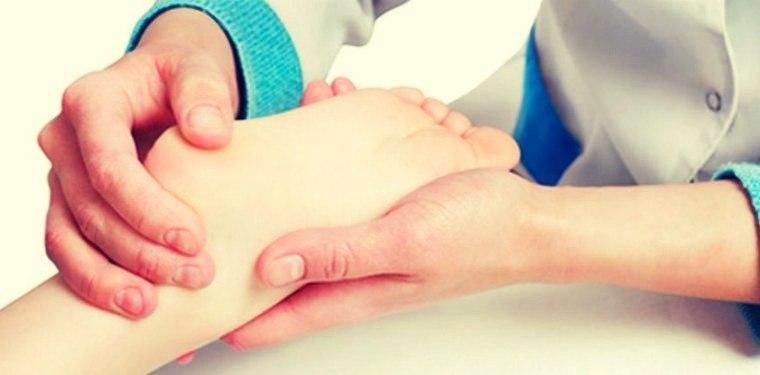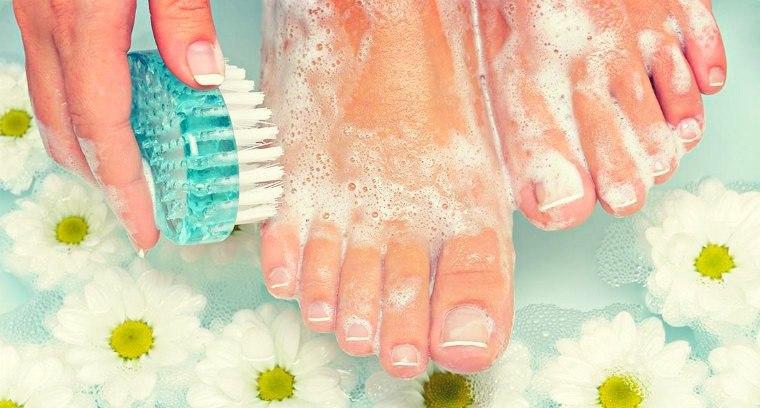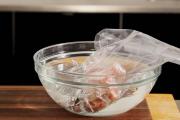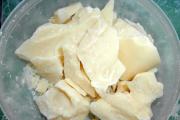Cracked heels - causes and treatment
Cracked heels are a common condition among people of all ages. Cracks appear more often in women, but men are also susceptible to them, although to a much lesser extent. This problem is especially relevant in the summer, when the legs are constantly open and exposed to external influences. Cracks can appear independently or due to concomitant diseases such as diabetes or fungal infections.
There is a common misconception that such a disease manifests itself with age, but the experience of dermatologists says the opposite. Cracks can even appear in children if conditions are favorable for the disease. In this article we will look at cracking heels, the reasons for their occurrence, treatment methods and how to avoid a disease that causes severe discomfort.
Reasons for appearance
Throughout life, a person’s foot bears the load and weight of the body. The skin on the heels is constantly under stress, the cellular structure changes when walking: when a person steps on the heel, the skin comes under pressure and stretches, and at the moment when the heel leaves the ground, the skin shrinks back. The cellular structure on the sides of the foot is most susceptible to this phenomenon, which is why everyone has dead tissue around the heels.
Despite the fact that every person's feet experience stress, not everyone develops cracks, so it is necessary to determine the reasons for this behavior of the skin. The main cause is dermatitis, a skin disease that appears due to external irritants: dirt, poor hygiene, uncomfortable shoes, etc. But there are other reasons, much deeper and more dangerous.
- Fungal infection. A common cause of cracked feet. The fungus infects and dries out the skin, it loses its plasticity and therefore cracks when deformed while walking. At the first symptoms, consult a mycologist. If the cause is a fungus, then you need to treat it, otherwise all other procedures will be useless.
- Diabetes . Disruption of blood vessels in diabetes affects the nutrition of skin cells on the legs. An important difference between “diabetic” fissures is that they do not cause any pain, only discomfort. If such cracks appear, check your blood sugar.
- Poor hygiene. The accumulation of dirt on the feet causes cracks. The human body moisturizes the skin with the help of sweat glands, and dirt dries it out. The same applies to lovers of gardens and vegetable gardens. Earth is not dirt, but it also dries out the skin a lot.
- Metabolic disorder. Metabolism affects the nutrition of the cells of our body. If it slows down, the skin will not receive enough vitamins and moisture, which can lead to cracking.
Deep trenches are dangerous because they allow pathogens into unprotected flesh. It is difficult to protect our feet from them because we cannot constantly monitor their hygiene as we can the hygiene of our face or hands, which are almost always exposed.
Treatment methods for cracked heels
People are accustomed to treating skin diseases at home and not going to the doctor. Indeed, there are many ways to quickly get rid of cracks, both pharmacy and folk.

Let's look at home treatment options that may be effective. But if all efforts do not lead to results, then you need to consult a dermatologist; perhaps the cracks are caused by concomitant ailments that are not visible to the eye.
Folk remedies
In medical circles, it is customary to be wary of “grandmother’s methods.” When it comes to skin diseases, things are a little different. Here folk remedies are often practiced, they are recommended by dermatologists, and their effectiveness has been proven. Let's look at the methods that can be used, they are safe and useful.
- Honey therapy. To create a honey lotion you will need two heaped tablespoons of flour and two teaspoons of flower honey. 20 minutes before applying the substance to the skin, you need to steam your feet in the bathroom. Immediately after the bath, you need to spread a mixture of flour and flower honey, then wrap it in several layers of gauze. After 8 hours, the bandage should be removed and the feet should be washed with rich soap. It is recommended to do the procedure before bedtime.
- Treatment with olive oil. The oil should be heated, but not brought to a boil. Take a hot bath, then generously lubricate your feet with warm oil. Perform the procedure before bed to give the oil a few hours to moisturize the skin.
- Therapy using apple cider vinegar. For one tablespoon of water, add a tablespoon of vinegar. A cotton pad or cotton rag should be soaked in the solution, applied to the cracked heel, wrapped in cling film or gauze, and put on warm socks. After 7-8 hours, wash your feet and remove the layer of dead skin.
- Ammonia and glycerin. Mix a spoonful of ammonia and a spoonful of glycerin. The further procedure is similar to honey therapy: steaming, wetting and 8 hours in a bandaged state.
- Steaming. The simplest method for those who want results, but are not ready for additional manipulations with their heels. In the evening, steam your feet well in the bath and go to bed. In the morning, lubricate your heels with any rich cream.
- Boiled potatoes. To prepare the decoction, boil 3 potatoes and chop them into small pieces. Add a teaspoon of soda and 20 grams of cold water to the potatoes. Place your feet in the broth for no more than 10 minutes. Finally, wash your feet and scrub your heels with a pumice stone.
- Solid oil against cracks. Steam your feet in hot water, lubricate your heels with grease and go to bed. In the morning, be sure to wash your feet with soap. Positive results are visible after the second application.
- Laundry soap against cracks. Not the easiest way, but effective. First, strong black tea is brewed and a cotton pad is placed in it. After the disc has become wet, laundry soap is applied to it. The further procedure is similar to other folk remedies: apply, bandage. Leave overnight or 8 hours, remove, wash, repeat for several days in a row.
Each of the proposed methods is good. Use the one that is more pleasant and convenient for you. It is better to choose one method than to combine several different ones. Components do not always give a lightning-fast effect. You should stick to one procedure for several days.
Homemade ointments
Ointments are the easiest way to cure cracked skin; they are easy to use, affordable, and can be prepared at home if desired. We've highlighted some of the best solutions for your feet.
- Ointment with herbs and pork fat. Lard is mixed with celandine and calendula flowers. The simplest homemade ointment, but effective. Fat softens the skin, and herbs stimulate skin regeneration. To prepare you will need 50 grams of lard and 5 grams of calendula and celandine. You need to mix until you get a homogeneous mass.
- Badger fat ointment. Grated carrots mixed with badger fat heated in a water bath are very popular among people suffering from cracked heels. People's love was formed due to the fact that badger fat contains vitamins A and E, which make the skin elastic and firm. For 50 grams of badger fat, grate one medium carrot. Then the fat is heated in a water bath. Fresh grated carrots are added to the melted lard.
- A mixture of plantain and Vaseline. Mix dry plantain leaves with vegetable oil, then mix with petroleum jelly in a ratio of 1 to 10, where 1 is the prepared mixture, and 10 is petroleum jelly
- Egg yolk ointment. We need a tablespoon of vegetable oil, a spoon of 9% vinegar and one egg yolk. All components are mixed into a single substance, which is applied to the patient’s heels. The ointment remains on the heels for 8-9 hours, after which you need to wash your feet with soap.
Ointments can be combined, replaced, and different ones can be tried. These are not antibiotics, the course of which greatly affects the immune system. If you've been using badger fat for a week but haven't seen any results, try making an ointment with Vaseline. In general, monitor the condition of your heels and opt for an ointment that quickly produces positive results.
Pharmacy creams
It is difficult to prepare the cream at home, so we will make do with what the pharmacy offers us. There is a choice, it is important to determine the most suitable cream for you personally.
- Cream "Zorka" Initially, this product was created to moisturize the cow's udder. It turned out that human skin also responds well to its use. The active component Floralizin not only moisturizes the skin, but also accelerates blood circulation. Vaseline, which is part of the cream, also helps the skin recover.
- Balm “Doctor Biocon”. The acids included in the ointment have antiseptic properties, and calendula extract heals the resulting cracks.
- Radevit. The drug is more expensive than Zorka, but it is also more effective. Radevit treats not only skin diseases, but also the consequences of burns. It contains a whole complex of vitamins (A, E and D2) to treat cracks and prevent relapses.
- Doctor. Cream with urea “Lekar” is designed to combat cracks and other dermatological diseases. The disadvantages include the inability to heal deep cracks, but otherwise an excellent way to cope with any skin ailments on the heels.
Cream has one undeniable advantage over ointments - the absence of a strong odor. This point is important for people who cannot stop visiting crowded places where it is undesirable to emit the smell of fats and herbs.
Foot peeling
There are adherents of different treatment methods, some use ointment, and some use mechanical removal of hardened tissue. The choice is always yours, just keep in mind that peeling cannot be done more than once a week, otherwise you can damage healthy skin. In this case, the treatment will take a lot of time.
- Pumice. This is a rough brick designed to remove dead skin from your heels. For cracks, it is used for the same purpose. Use pumice with small pores. The procedure is usually carried out in the bathroom after the feet have been thoroughly warmed up. Using circular movements, effortlessly walk along your heels, avoid touching healthy areas of the skin. Stop the procedure if you feel pain.
- Pedicure grater. It has properties similar to pumice, but cleansing the heels follows a different principle: you need to use a grater from the center of the foot to the heels.
- Scrubs. The safest option of all mechanical ones. You can use cosmetic scrubs, or those you have at home. For our purposes, ground coffee, corn flakes or flour, and fine salt are perfect. Be careful with salt. If the cracks are deep, you can bring salt into the wounds, then you will have to wash it out with water for a long time.
Peeling should be accompanied by additional ointments or creams. By mechanical action you can remove dead skin, but not rid yourself of the disease. Moisturizing the skin with cracks is the main task.
Treatment of cracked heels at the doctor
If you have cracked heels, the smartest thing to do is see a dermatologist. He will be able to find out the reason for this skin behavior and offer high-quality treatment. It is important to establish the cause, since it is not always on the surface. If it is dermatitis, then we can say that the patient is lucky.

There are no special methods for removing cracks associated with dermatitis. The doctor will also recommend you ointments and creams for moisturizing. It’s another matter if the cause of the cracks was a third-party disease.
- Fungus. In this case, moisturizing ointments and creams will be practically useless. Your dermatologist will refer you to a mycologist to analyze the development of the fungus.
- Diabetes . Deep cracks may indicate high blood sugar; your dermatologist will refer you for tests. If fears are confirmed, comprehensive treatment of fissures and prevention of diabetes will be prescribed.
- Gastritis. Disruption of the digestive system and metabolism can cause the skin on the heels to crack under stress. The patient may need to consult a nutritionist and gastroenterologist to get rid of the disease.
Before visiting a dermatologist, try active treatment with traditional methods or pharmacy creams for a week. If you see strong improvements, most likely there are no other problems. On the other hand, visiting a specialist will not be superfluous.
Prevention
The culprit of cracks is almost always the person himself. We rarely pay attention to the factors that spoil our health due to the accelerated pace of life. Pay attention to preventive measures that will protect you from the primary or recurrent appearance of cracked heels.

Preventive measures are extremely simple and related to caring for foot health. Of course, it is impossible to predict and prevent some causes, but you can reduce the risk of the disease.
- Don't wear tight shoes. The skin suffers if it has to constantly be in a compressed state. Shoes should be comfortable and soft, regardless of fashion, season or material.
- Maintain good foot hygiene. Feet should be washed daily in the evenings with rich soap and washed thoroughly. “Rinse under water” is not enough. Feet take on a lot of bacteria during the day, especially in the summer.
- Don't wear someone else's shoes. Wearing someone else's slippers when visiting or a neighbor's sneakers is an ideal gift for foot and nail fungus. Try not to take risks, wear only your own shoes. It will be good to buy new shoes more often and get rid of old shoes.
The main point in preventing cracks is always hygiene; the more carefully a person takes care of their feet, the less likely there is to be a breakdown of the skin. Of course, if the violation was not a consequence of another illness.
Video: how to treat cracked heels
Squeeze a whole tube of calendula ointment (25 grams) into a container. You should also pour two teaspoons of vitamin A there and mix everything. Once you have obtained a homogeneous mass, place the cream in an opaque jar to protect the cream from sunlight. Application: after taking a warm bath, clean your heels with a cosmetic grater, then apply cream, put on cotton socks and go to bed. Daily use of this cream for a week will give excellent results.














